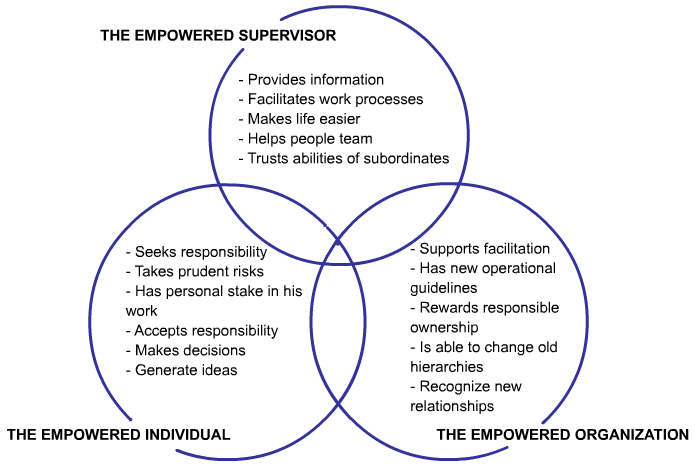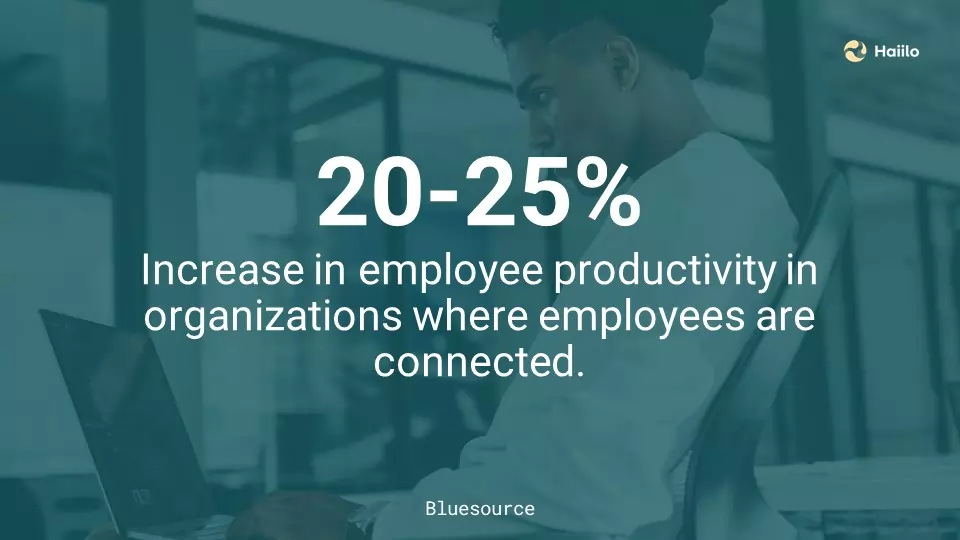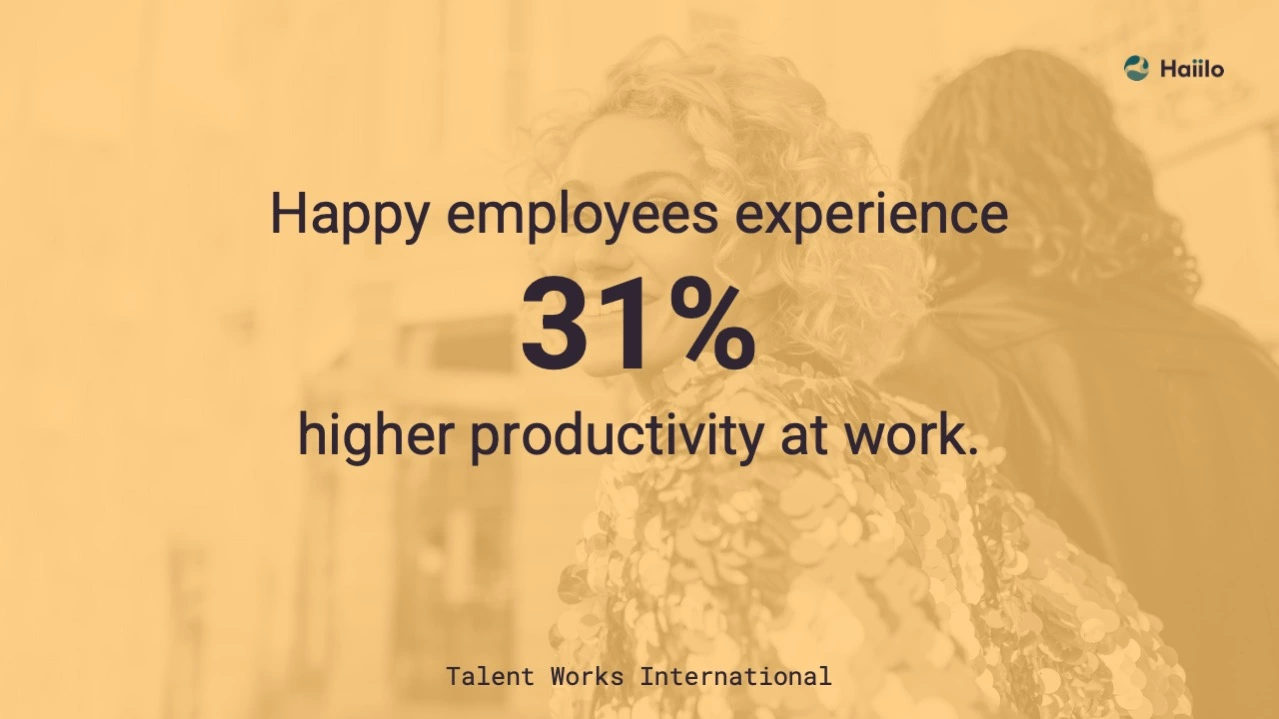Empowering leadership is about having the initiative in the workplace for a company to show trust and accountability in its workforce. With that trust and accountability comes responsibility and a new level of autonomy and decision-making in employees’ day-to-day tasks.
Empowering leadership style also helps embrace, grow and develop an improved workplace culture. Because when people are unchained, they naturally will strive to shine, which will be the case more often than not.
And in the cases where it’s not? Guess what. Those become learning moments because failures in the workplace lead to improved decision-making for the future.
Does Your Management Style Empower Leadership?
It’s typical that increasing individuals’ creativity and growth has a lot to do with the managers’ style they’re working under.
In fact, it wasn’t long ago that it was considered the norm for a leader or manager to simply delegate day-to-day tasks. Today? That management style is considered far too out-of-touch, especially for a younger generation of professionals and even to more and more experienced professionals that want to see their efforts recognized.
Empowering Leadership to Increase Engagement
Did you know that when implementing the empowering leadership style among your workforce, you create new and organic engagement opportunities for colleagues in far-reaching ways? That’s because you’re nurturing employees to feel more empowered and confident in making day-to-day decisions.
Doing so benefits employees’ professional growth and development to those you’ve already shown a significant level of commitment to in hiring in the first place. It also benefits your organization in new ways and in large amounts with more ideas and perspectives brought to the table.
Benefits to the Empowering Leadership Style within the Workforce
Surrounding your workplace with the benefits of empowering leadership means you’ll be enhancing your company culture inside and outside of the workplace.
Employees who have the trust and autonomy from their sense of empowerment look more forward to coming to the office — or working from home — and will show more commitment and passion in their day-to-day tasks and the organization as a whole.
Just some of the areas where we see employees excelling as a result of empowering leadership include:
- Taking increased initiatives to go above and beyond
- Showing leadership in following best practices
- Enhancing their productivity
- Maximizing their communication skills
- Learning to embrace and accept change
- Pushing through roadblocks and barriers
- Delivering an increased level of empathy to customers

Steps You Can Take to Apply an Empowering Leadership Strategy
So, what are some of the steps you can take to embrace empowering leadership as part of your strategy?
- Offer employees the end-to-end authority and ownership. When doling out a new project or larger task, show an employee the trust you have in giving her or him the full responsibility. Your employee will feel that responsibility and the motivation to complete the job to the best of their ability.
- Lose the micromanagement sense of leadership and let your employees reap the rewards of feeling empowered. This may be a teaching moment for other managers, too, as far as losing the micromanagement. In all seriousness, it’s essential for employees to feel a true sense of empowerment that they are allowed to handle their tasks on their intuition. If they request assistance, then a manager can jump in and help.
- No one knows their employees’ strengths and weaknesses at the workplace more than their line managers. In fact, managers are the greatest factor when it comes to employee engagement and productivity. Encourage empowering leadership among the workforce by having leaders discover potential barriers and to use those as teaching opportunities in the form of coaching. This allows employees to explore new ways and to actionize those.
- Organizations should offer employees assistance in creating and evolving personal development goals and plans alongside their line managers. This helps to steer employees along an agreed path forward, and furthermore, it keeps them motivated.

- Provide employees with opportunities to get out of their comfort zones and explore other areas of the organization to help nurture a sense of empowerment. These can be in the form of a short-term job alternation or job transition within another department. Or even at another location. They’re typically six months to a year and allow the employee to see other company and business areas while giving them a sense of empowerment.
- Be open to all areas of communication with your employees and allow them to share ideas and share their thoughts on anything and everything related to their area of the organization and the company as a whole. This gives them a voice and helps them feel more engaged and empowered to let their ideas be heard.
- While it’s good to encourage employees to think outside the box and even commit and participate with solutions outside the box at times, offer them best practices and rules for clarity. This gives them a sense of their core space, without roadblocking any inroads you’ve made in empowering leadership. And while pushing outside those walls should be allowed at times, this space gives them the means to know they’re supported and in the right space.
Of course, like anything else in life, there are possible downsides to empowering leadership in employees within any workplace in any industry. That’s just a fact.
Those potential negatives are not a reason to hesitate or hold off on your empowering leadership strategy.
However, it is wise to be aware of the downsides so you can more easily be alerted to any possible red flags and remove those as needed.

Possible drawbacks to be aware of empowering leadership
With the positives around empowering leadership far outweighing any possible negatives, it’s good for you and your organization’s managers to know the shortcomings of employee empowerment.
Employees that are green and without experience
- There’s no reason why a younger employee fresh out of university or even an experienced employee new to a particular industry shouldn’t be provided with the same benefits of autonomy that comes with empowering leadership. However, they will require a different set of tools to succeed. And they will also need more support from their line managers and leaders compared someone who’s more experienced or who has worked in the industry for a while.
Employees seeing empowerment as weakness on part of manager
- One might ask if empowering leadership means the beginning of the end of line managers and supervisors. It will actually mean the exact opposite because — especially in the early stages — they’ll need to help nurture the process. In some cases, line managers will have to take even more control in bringing together decisions made by a range of employees from within and outside their individual teams.Plus, when something goes off the rails — and when something goes fantastically right — there are still obvious needs for organizational leaders, supervisors and line managers.
Empowering leadership needs time to evolve
- While some of the benefits of empowering leadership will almost immediately surface, not all of them will, and that’s normal. Rome wasn’t built in a day, as they say. Your empowering leadership strategy will need time to develop among the varying personalities, responsibilities and tasks within your organization. Take regular temperature checks from your employees, learn from the wins and what needs to be improved. Then adjust.
Productivity struggles can exist but are generally temporary
- Take for example, the idea of empowering leadership providing employees with the autonomy and power of how and when they work. What if an employee feels like putting just 50% effort on Monday and 150% effort on Tuesday, then 100 percent on Thursday but 80% on Wednesday and Friday. Will other employees resent this? Will they start deciding that they’ll pack it in on Mondays, too? It’s a realistic possibility and a red flag to keep an eye out for. However, the cream rises to the top, and colleagues unwilling to pull their weight will find themselves in the shadows of resentment.

Start empowering leadership in your own team with ease
Kicking off your new goals for empowering leadership in your workplace can start with any line manager with subordinates at any time. It’s simple.
Get started by involving your employees in some of your day-to-day tasks. Little by little, encourage them and empower them to start running with those tasks. Your workers will feel the immediate encouragement and positive energy to complete these new tasks with a new sense of pride.
Meanwhile, you as a line manager can have a sky-high view and focus on the best way to reach the goals for your individual team as a whole and the larger organization.










